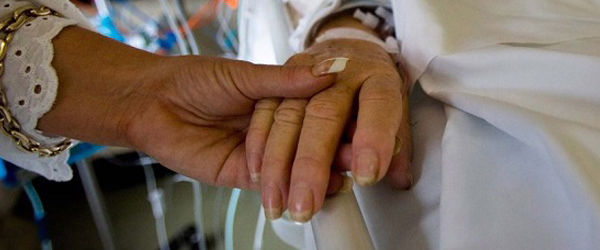Fifty years ago this October, Blessed John XXIII and more than 2,500 bishops and heads of religious orders from around the world gathered in St. Peter's Basilica for the opening session of the Second Vatican Council.
Over the following three years, Vatican II would issue 16 major "pronouncements" on such fundamental questions as the authority of the church's hierarchy, the interpretation of Scripture, and the proper roles of clergy and laity. Those documents, and the deliberations that produced them, have transformed how the Catholic Church understands and presents itself within the context of modern secular culture and society.
Because Vatican II was one of the monumental events in modern religious history, its golden anniversary will naturally be the occasion for numerous commemorative events, including liturgical celebrations, publications and academic conferences.
At a Vatican II exhibition at Rome's Basilica of St. Paul Outside the Walls, which opened in late January and will run until November 2013, the displays include original handwritten pages from Pope John's speech at the council's opening session, and a Vatican passport issued at the time to a young Polish bishop named Karol Wojtyla, the future Pope John Paul II.
Yet Vatican II is not merely of historical interest; it is very much a living issue in the church today.
Scholars still debate to what extent the council's achievements, in such areas as interfaith dialogue and liturgical reform, were organic developments in the church's history or radical breaks with the past. And clergy and laity alike differ over how expansively to apply the council's pronouncements, whether sticking closely to the letter of the documents or following a more broadly construed "spirit of Vatican II."
Pope Benedict XVI has rejected what he calls the "hermeneutics of discontinuity and rupture" in the present-day understanding of the council and has called instead for interpreting Vatican II as an instance of "renewal in continuity" with the church's 2,000 years of tradition. Exploring and promoting that idea will be a major goal of the Year of Faith that begins this Oct. 11, exactly half a century to the day since Vatican II opened.
A relatively small but highly vocal number of Catholics reject the council altogether, charging among other things that subsequent changes to worship have undermined the solemnity of the Mass and that a growing openness to other religions conflicts with the need to proclaim salvation through Jesus Christ alone. The most prominent such group, the Society of St. Pius X, effectively broke with Rome in 1988, when its founder, the late French Archbishop Marcel Lefebvre, ordained four bishops without approval from the pope.
Pope Benedict has made reconciliation with the traditionalist society a priority of his pontificate. He lifted restrictions on the traditional Latin Mass, now called the extraordinary form, in 2007. Less than two years later, he removed the excommunications of the four illicitly ordained bishops. And last fall, the Vatican held out the possibility of making the group a personal prelature if a full reconciliation is reached. A prelature is somewhat like a global diocese, a status currently held only by Opus Dei.
As a condition of reconciliation, though, the Vatican has asked the society to give its assent to a summary of certain non-negotiable doctrines. These have not been made public, but they presumably include the major teachings of Vatican II.
Though the ongoing dialogue between the Vatican and the society remains confidential, both sides have recently published documents that give insights into their respective positions.
In early December, L'Osservatore Romano, the Vatican newspaper, published an article by Msgr. Fernando Ocariz, the second-highest official of Opus Dei and a participant in talks with the Society of St. Pius X.
In the article, Msgr. Ocariz insisted that all the teachings of Vatican II require nothing less than "religious submission of intellect and will," and that even the council's apparent innovations in doctrine are properly understood as in continuity with tradition. But he also emphasized that "there remains legitimate room for theological freedom" in interpreting them.
Later the same month, Father Jean-Michel Gleize, a theologian who has represented the society in discussions with the Vatican, published a response to Msgr. Ocariz's article. Perhaps the most striking part of Father Gleize's argument was his rejection of the hermeneutic of continuity as overly "subjective" and neglectful of the "unity of the truth" necessary in church teaching. That would seem to suggest an endorsement of the hermeneutic of rupture usually associated with the council's most progressive champions.
Reading such an exchange, it's not easy to believe that the Year of Faith will end with anything like a Catholic consensus on the meaning of Vatican II. But as someone well known to think in terms of centuries, Pope Benedict will surely be neither surprised nor discouraged by the continuing debate.
---CNS
{gallery width=100 height=100}gallery/2012/0203/vatican/{/gallery}

